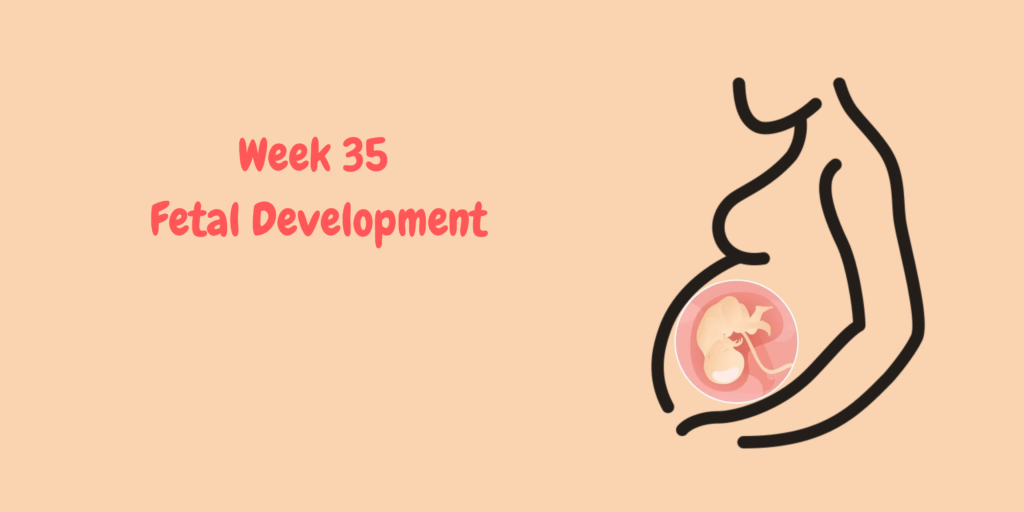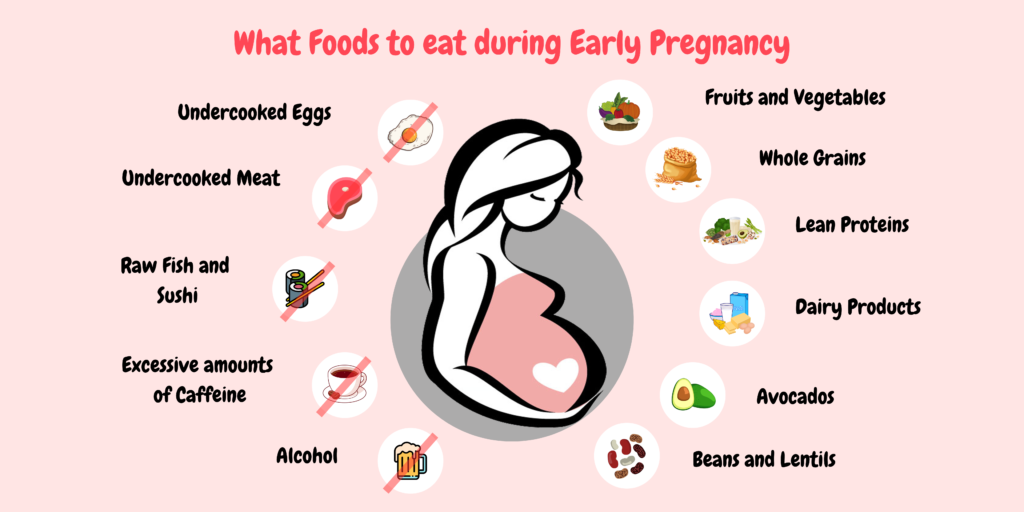8th month of pregnancy (32-35 weeks)

The eighth month of pregnancy, covering (32 to 35 weeks), marks a significant phase in the journey toward motherhood. You are progressively moving towards the end of this journey. During this time, the baby experiences rapid growth, with organs maturing and fat accumulation increasing, preparing for life outside the womb. Expectant mothers may notice high physical discomfort due to the growing belly. Emotional fluctuations are common as anticipation builds, along with concerns about childbirth and parenting. It’s crucial for mothers to focus on self-care, maintain regular prenatal check-ups, and discuss any questions with healthcare providers to ensure a healthy pregnancy.
On this page
1. Common pregnancy symptoms at 8th months pregnant
At 8 months pregnant, many women experience a range of common symptoms, including:
- Increased Fatigue: The growing baby and physical changes can lead to more tiredness.
- Shortness of Breath: As the baby grows, it can put pressure on the diaphragm, making it harder to breathe deeply.
- Swelling: Edema, particularly in the feet, ankles, and hands, is common due to increased fluid retention.
- Back Pain: The extra weight can strain the back, leading to discomfort.
- Heartburn: Hormonal changes and pressure from the uterus can lead to acid reflux.
- Frequent Urination: As the baby drops lower in the pelvis, pressure on the bladder increases.
- Braxton Hicks Contractions: These “practice” contractions may become more noticeable.
It’s always good to consult with a healthcare provider for personalized advice and to discuss any concerns.
2. Fetal Development

At eight months pregnant, typically around 32 to 35 weeks of gestation, fetal development is quite advanced. Here are some key developments during this stage:
- Size and Weight: The fetus measures about 16 to 19 inches long and weighs between 4 to 6 pounds, but this can vary widely.
- Body Systems: Major organs, including the lungs and brain, continue to mature. The lungs are producing surfactant, which helps keep the air sacs in the lungs from collapsing after birth.
- Movement: The fetus is quite active, with noticeable movements such as kicks and rolls. However, as space in the womb decreases, movements might feel different.
- Fat Accumulation: The fetus is gaining fat, which helps regulate body temperature after birth. This layer of fat gives the baby a more rounded appearance.
- Sensory Development: The fetus can hear sounds from outside the womb and may respond to them. Vision is developing, and the fetus can perceive light.
- Positioning: Many babies begin to position themselves head-down in preparation for birth, though some may still be in a breech position.
- Nails and Hair: Fingernails and toenails are fully formed, and the baby may have some hair on their head.
At this stage, it’s also important for the mother to monitor her health, attend regular check-ups, and discuss any concerns with her healthcare provider.
3. Baby Bump
At eight months pregnant, many women have a noticeable baby bump, often described as round and firm. Here are some characteristics of a baby bump at this stage:
- Size: The bump is typically quite pronounced, often measuring about 34 to 36 centimeters from the pubic bone to the top of the uterus.
- Shape: The shape may vary from woman to woman. Some may have a more pronounced belly that sits high, while others might have a lower bump.
- Skin Changes: Stretch marks may be visible, and the skin around the belly can appear tighter as the skin stretches to accommodate the growing baby.
- Movement Visibility: You might be able to see kicks and movements more clearly from the outside as the baby grows stronger.
- Support Needs: As the belly grows, some women find support bands or pillows helpful for alleviating back pain and providing comfort.
It’s a beautiful time, but it can also come with challenges, such as discomfort or difficulty sleeping. You should try to keep yourself healthy and active.
4. Size and Weight of Baby
At eight months pregnant, the baby is almost the size of pineapple.
Size: The baby usually measures about 16 to 19 inches (40 to 48 centimeters) in length from head to toe.
Weight: The average weight ranges from about 4 to 6 pounds (1.8 to 2.7 kilograms), but some babies may weigh more or less depending on various factors.
5. Fetal Movement at 8th months pregnant
At eight months pregnant, fetal movement is typically quite noticeable and can be described as follows:
- Increased Strength: The baby’s movements are often stronger and more defined as they have grown larger and have more muscle control.
- Types of Movement: Expect a mix of kicks, rolls, and stretches. You might feel movements like jabs or nudges as the baby adjusts positions.
- Frequency: Many women feel consistent movement, often noting that the baby is most active during certain times of the day, usually after eating or when lying down.
- Space Constraints: As the baby grows and space in the womb decreases, movements may feel different, more like shifts or squirms rather than wide-ranging kicks.
- Counting Movements: Healthcare providers often recommend monitoring fetal movements. A common guideline is to notice at least 10 movements within a two-hour period.
If there are significant changes in movement patterns, such as a decrease in activity, it’s important to contact a healthcare provider for guidance.
6. Baby Position at 8th months pregnant
At eight months pregnant, the baby’s position can vary, but many babies start to settle into a more optimal position for birth. Here are some common positions:
- Head-Down (Vertex Position): This is the ideal position for delivery. The baby’s head is down in the pelvis, which facilitates a smoother birth.
- Breech Position: Some babies may be positioned feet-first or buttocks-first. There are different types of breech positions, including frank breech (buttocks down with legs up) and complete breech (buttocks down with legs crossed).
- Transverse Position: In this position, the baby lies sideways across the uterus. This is less common as the pregnancy progresses, but it can occur.
- Oblique Position: The baby is at an angle, neither completely head-down nor sideways. This position can transition into a more favorable position for birth.
As the weeks progress, many babies will turn into the head-down position, especially closer to the due date. If there are concerns about the baby’s position, healthcare providers can discuss options.
7. You’re Diet at 8th months pregnant

At eight months pregnant, maintaining a healthy and balanced diet is crucial for both the mother and the developing baby. Here are some key dietary considerations:
- Balanced Meals: Aim for a mix of proteins, healthy fats, and complex carbohydrates. Include lean meats, fish, eggs, legumes, whole grains, fruits, and vegetables.
- Hydration: Drink plenty of water to stay hydrated, especially as fluid retention can increase during pregnancy.
- Calcium and Vitamin D: Important for the baby’s bone development. Include dairy products, leafy greens, fortified foods, and consider a prenatal vitamin.
- Iron-Rich Foods: To support increased blood volume and prevent anemia, include lean meats, beans, spinach, and fortified cereals.
- Omega-3 Fatty Acids: Important for brain development. Include sources like fatty fish (salmon, sardines), flaxseeds, and walnuts.
- Limit Sugar and Processed Foods: Try to minimize sugary snacks, sodas, and highly processed foods to maintain healthy weight gain and energy levels.
- Frequent Small Meals: Eating smaller, more frequent meals can help manage heartburn and discomfort.
- Avoid Certain Foods: Raw or undercooked seafood, eggs, and meats, as well as unpasteurized dairy products to reduce the risk of foodborne illnesses.
Always consult with a healthcare provider or a nutritionist for personalized dietary advice based on individual health needs.
8. Checklist for when you’re at 8th months pregnant
Here’s a helpful checklist for women who are eight months pregnant:
- Regular Check-ups: Ensure you have your prenatal appointments scheduled and any necessary tests completed.
- Monitor Fetal Movements: Keep track of your baby’s movements and report any significant changes to your healthcare provider.
- Nutrition: Maintain a balanced diet rich in nutrients and hydration.
- Exercise: Engage in gentle exercises or prenatal yoga as advised by your doctor.
- Pack Your Hospital Bag: Include essentials for you and the baby, such as clothing, toiletries, and documents.
- Finalize Birth Plan: Discuss your birth plan with your healthcare provider.
- Set up Nursery: Ensure the baby’s sleeping area is ready, including crib, changing table, and essentials.
- Support System: Connect with friends and family for emotional support.
- Relaxation Techniques: Consider practicing relaxation methods, such as deep breathing or meditation.
- Stock Up on Essentials: Gather diapers, wipes, and clothing for the baby.
- Attend Prenatal Classes: If you haven’t already, consider taking classes on childbirth, breastfeeding, and newborn care.
- Read Books: Explore parenting books or resources to help you feel prepared.
- Review Insurance: Check that your health insurance covers labor, delivery, and postpartum care.
- Plan Maternity Leave: Finalize your maternity leave plans with your employer.
- Rest: Prioritize rest and sleep whenever possible.
- Pamper Yourself: Consider a prenatal massage or other self-care activities to relax.
Having this checklist can help ensure you’re prepared and reduce stress as you approach your due date.

